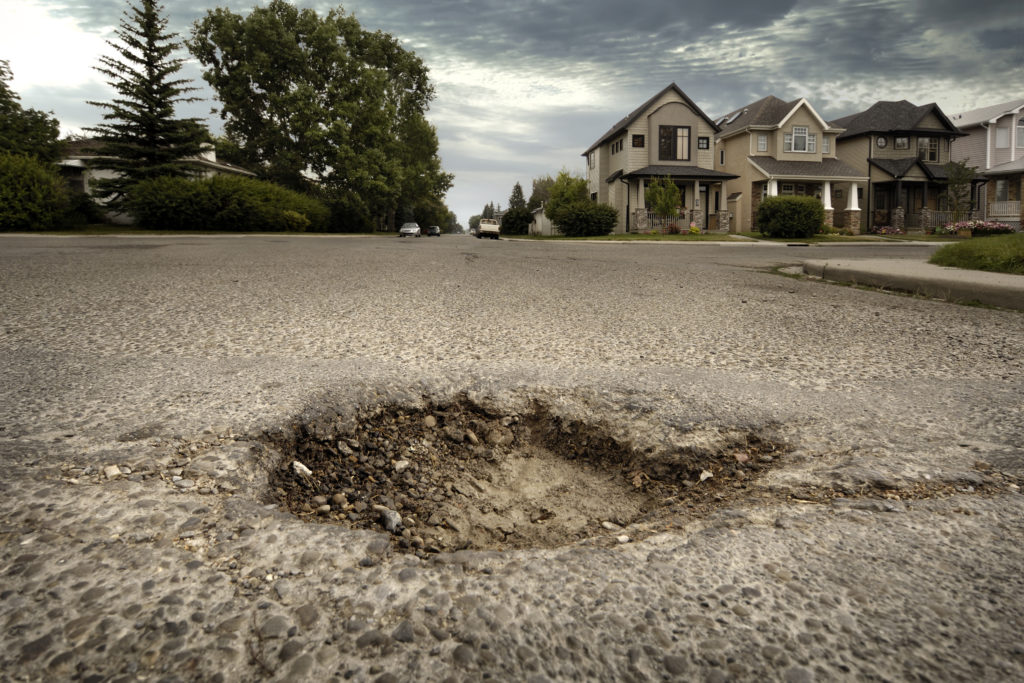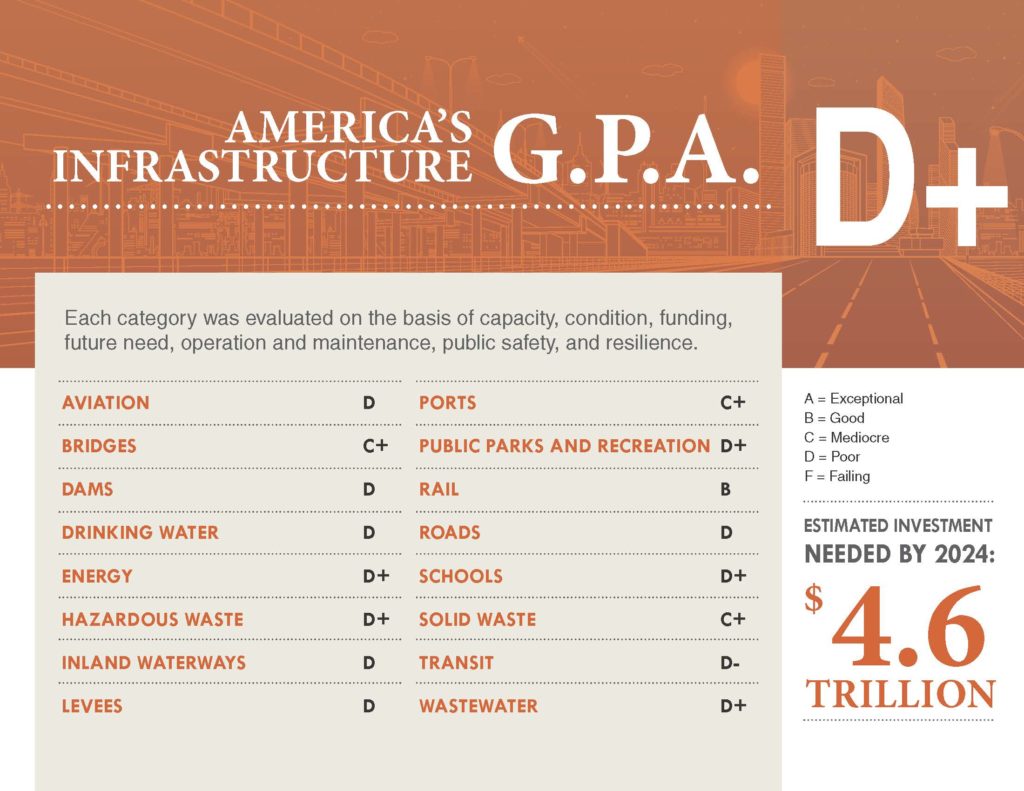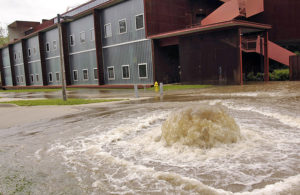Infrastructure Grades Reveal Rail Improvements, Concerns about Public Transit

The American Society of Civil Engineers released the 2017 Report Card for America’s infrastructure earlier today. Similar to a school report card, the study outlines the condition of the nation’s bridges, water, transportation, and other infrastructure in letter grade format. As someone with a background in infrastructure management, I follow these once-every-four-years reports with great interest and welcome the opportunity they bring to talk publicly – as a nation – about infrastructure needs. And, as today’s report shows, there are many.
The previous ASCE report card, released in 2013, rated America’s cumulative GPA for infrastructure at a D+. Our overall grade of D+ again in 2017 shows that little has changed in four years.
Why should those without backgrounds in engineering or infrastructure management care about this report?
Because everyone in America uses our roads and bridges and is impacted by their condition! This report is a reminder that, as much as we’ve been doing in the past few years, we’ve been more or less running in place. While we’re taking steps in the right direction – and it’s encouraging that both the former and current administrations are looking to increase the amount of funding available to upgrade our roads – that’s only one part of our entire infrastructure system.
Potholes and cracks in roads are tangible deterioration effects we can see and feel when we drive. But we must not forget that our water and sewer systems are just as valuable. Just because they’re underground doesn’t make them any less important. The same holds true for other public assets – such as our buildings, treatment plants, detention ponds, signage, lighting, and even our trees. They all require significant maintenance work and funding to maintain them at levels that keep them functional and valuable assets in our communities.

What factors led to our average GPA of D+?
It seems like we’ve fallen into a psychological rut or a helpless mindset. We want the “new and improved” and we believe “bigger is better,” so we push for the “latest and greatest.” But we forget that everything we construct – our roads, buildings, utilities, recreational amenities – will eventually have a financial impact on our communities. We’re either going to continually spend dollars on maintenance work or budget to replace it. Setting aside funds for these efforts is never easy. Educating our public officials, local businesses, and, most importantly, our residents, on the value of our infrastructure assets is priority one. They need to be reminded that whatever we’re installing or building today, we need to think about what’s going to happen to that asset in 25, 30, 50, or 100 years from now.
Is there a better way to manage these boggling tasks?
Asset management strategies can help communities efficiently evaluate their infrastructure’s current condition and develop a customized plan for the future. The concept of asset management provides a new paradigm – a new way of looking at things.
What’s the bottom line on the newly released infrastructure report card?
 It’s a good news/bad news scenario. We’re making progress, but there’s still a lot to be done. The more effort and energy we can invest in our infrastructure, the greater payback we will all see.
It’s a good news/bad news scenario. We’re making progress, but there’s still a lot to be done. The more effort and energy we can invest in our infrastructure, the greater payback we will all see.
Ayres Associates can help track assets, working in tandem with our partnering software vendor, Cartegraph. We can help you develop a robust, comprehensive, properly planned, and managed approach toward managing your assets and designating funding resources appropriately.

Post a comment: